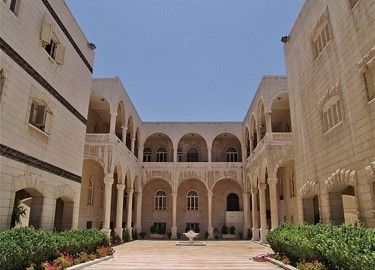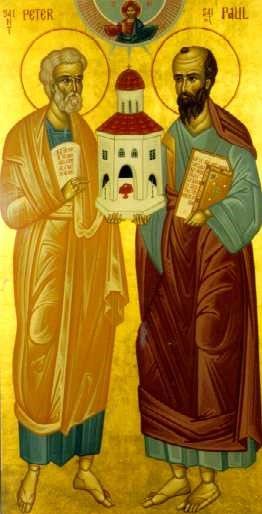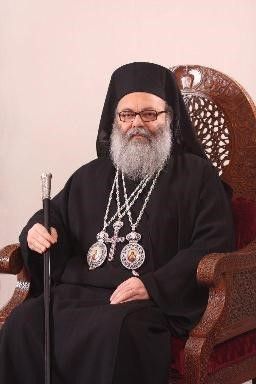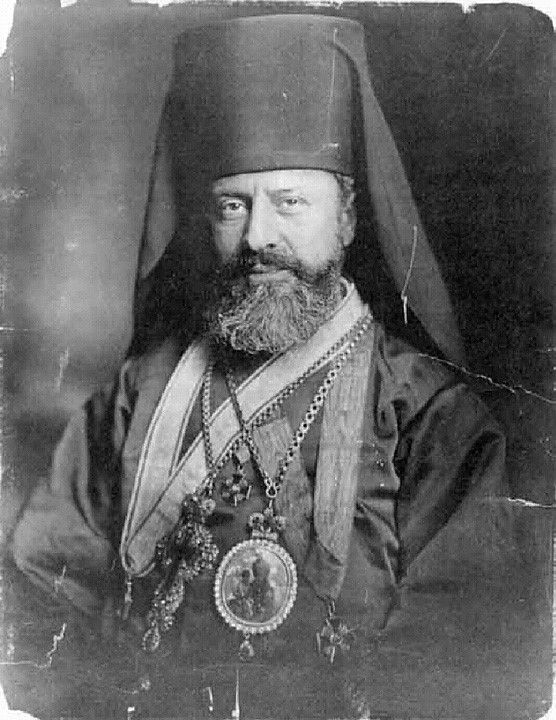
Who We Are
The Church of the Redeemer in Los Altos Hills is under the jurisdiction of the Antiochian Orthodox Christian Archdiocese of North America. We are a parish of the Diocese of Los Angeles and the West and are linked to the Orthodox Patriarchate of Antioch and all the East. We trace our roots to first century Antioch, the city in which the disciples of Jesus Christ were first called Christians (Acts 11:26). Our beloved parish stands as testimony and witness to our most ancient Christian Faith and to all those who have dedicated their lives to preserve its existence.
The Orthodox Christian Church
As described in the New Testament, the Orthodox Church is the first Christian Church founded by the Lord Jesus Christ Himself. The history of the Orthodox Church can be traced back to Christ and his Twelve Apostles. For twenty centuries, she has continued in her undiminished and unaltered faith and practice. Today her apostolic doctrine, worship and structure remain intact. The Orthodox Church maintains that the Church is the living Body of Jesus Christ. To learn more about our faith, refer to Discover Orthodox Christianity and to the Nicene Creed.
The Patriarchate of Antioch
The Church of Antioch was established by the Apostles Paul and Barnabas in 42 A.D., with St. Peter serving for the next eight years as its first prelate. The Church of Antioch is one of the five ancient Patriarchates of the Christian Church, along with Alexandria, Constantinople, Jerusalem, and Rome. We are in full communion with our brothers and sisters in various other Orthodox Christian jurisdictions, such as the Greek Orthodox Archdiocese of America and the Orthodox Church in America. Together we work to nurture the Orthodox Christians of this land—whether immigrants or native-born, cradle Orthodox, or converts—and to bring America to the ancient Orthodox Christian Faith.
Today the Patriarchate of Antioch is headed by His Beatitude John X. A succession of the primates of the Apostolic See of Antioch that goes back to St. Peter the Apostle is available through this link.
Scripture refers to Antioch as the place where the followers of Jesus Christ were first called “Christians” (Acts 11:26), and records that Nicholas, one of the original seven deacons, was from that city—and may have been its first convert (Acts 6:5). During the persecution of the Church which followed the death of St. Stephen the Proto-Martyr, members of the infant community in Jerusalem sought refuge in Antioch (Acts 11:19), and while St. Peter served as the first bishop of the city, SS. Paul and Barnabas set out on their great missionary journeys to Gentile lands (Acts 13:1) -- establishing a tradition which would last for centuries, as from Antioch missionaries planted churches throughout greater Syria, Asia Minor, the Caucasus Mountains, Mesopotamia, Greece The Balkans, Italy and most of the Mediterranean Region.
The Great Schism of 1054 resulted in the separation of Rome, seat of the Patriarchate of the West, from the four Eastern Patriarchs of Constantinople, Alexandria, Antioch, and Jerusalem. During the reign of the Egyptian Mamelukes, conquerors of Syria in the 13th century, the Patriarchal residence was transferred to the ancient city of Damascus, where a Christian community had flourished since apostolic times (Acts 9), and which had succeeded earthquake-prone Antioch as the civil capital of Syria. The headquarters of the Patriarchate, which has jurisdiction over all dioceses within its ancient geographic boundaries (Syria, Lebanon, Turkey, Iraq, and the Arabic Peninsula) as well as others in the Americas, Australia, and Western Europe, are located in Damascus on “the street called Straight” (Acts 9:11)

The Patriarchate of Antioch and All the East together with the three other ancient Eastern patriarchates (Constantinople, Alexandria and Jerusalem); four modern patriarchates (Russia, Serbia, Romania and Bulgaria); five autocephalous churches (Cyprus, Greece, Georgia, Poland, and Albania); and four autonomous churches (Sinai, Slovakia the Czech Lands, Finland and Japan) -many with dependent bodies throughout the world- comprise what is known today as the “Eastern Orthodox Church” with an estimated 250 million adherents, of whom, some 5-6 million live in the United States and Canada.
The Antiochian Church in North America
In the late 19th century, events in their homelands forced Antiochian Christians to join the ranks of Europeans who emigrated to other parts of the world. The spiritual needs of those who settled in North America were first met through the “Syro-Arabian Mission” of the Russian Orthodox Church, which has had a presence in North America since 1794. Fr. Raphael Hawaweeny, a missionary at heart, went to the imperial capital of St. Petersburg to meet with His Grace, Nicholas, ruling bishop of the Russian Diocese of the Aleutian Islands and North America, who was then in Russia to recruit new missionaries. After being canonically received under the omophorion of Bishop Nicholas, Father Hawaweeny arrived in the United States on November 17, 1895. At the request of Archbishop Tikhon, Hawaweeny was elected to serve as his vicar bishop, to head the Syro-Arabian Mission. His consecration as “Bishop of Brooklyn” took place at St. Nicholas Church on Pacific Street on March 12, 1904. Bishop Raphael thus became the first Orthodox bishop of any nationality to be consecrated in North America. He crisscrossed the United States and Canada, and even ventured deep into Mexico, visiting his scattered flock and gathering them into parish communities. Bishop Raphael fell asleep in Christ on February 27, 1915. In 2000 Bishop Raphael was glorified as a saint by the Orthodox Church in America with participation from hierarchs of the Antiochian Archdiocese. His feast day is celebrated on the first Saturday in November.
Today the faithful of the Antiochian Orthodox Christian Archdiocese of North America are served by nine hierarchs and over four hundred clergy in 266 churches and missions throughout the United States and Canada. In summary, there are thirty established departments and four service organizations, which exist on the parochial, diocesan, and Archdiocesan levels: the Fellowship of St. John the Divine, Teen SOYO (Society of Orthodox Youth Organizations), Antiochian Women, and the Order of St. Ignatius of Antioch. The WORD magazine, published monthly (except July and August), continues to be the official publication of the Archdiocese.
Thousands of people of various ethnic and racial backgrounds have “come home” to the Orthodox Church and have found a spiritual home in the parishes of the Antiochian Archdiocese, joining with Americans and Canadians of Middle Eastern descent to make the Antiochian Orthodox Christian Archdiocese of North America a vibrant witness for Christ and his Church.


